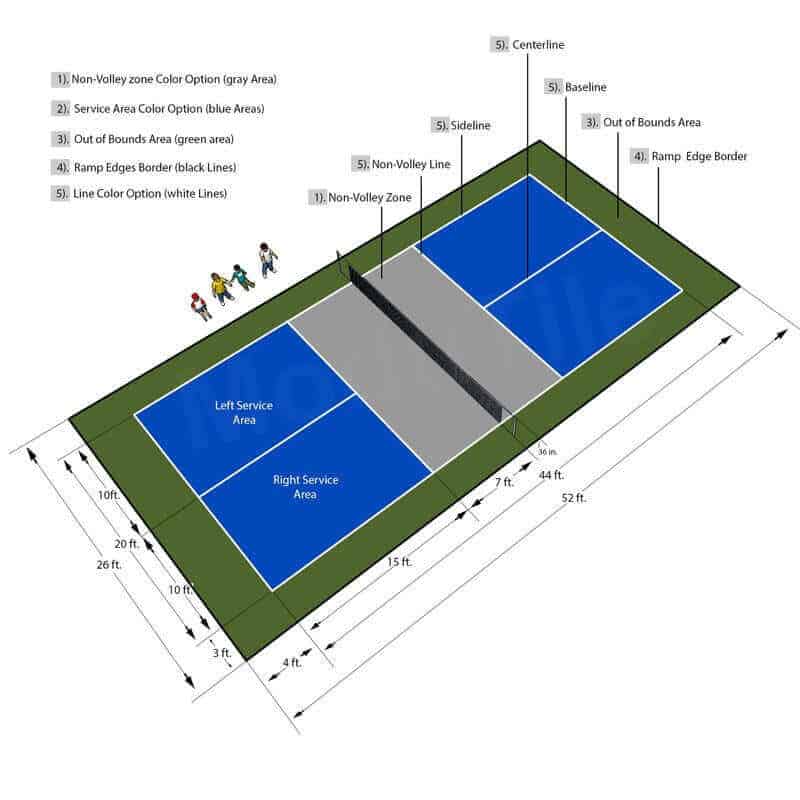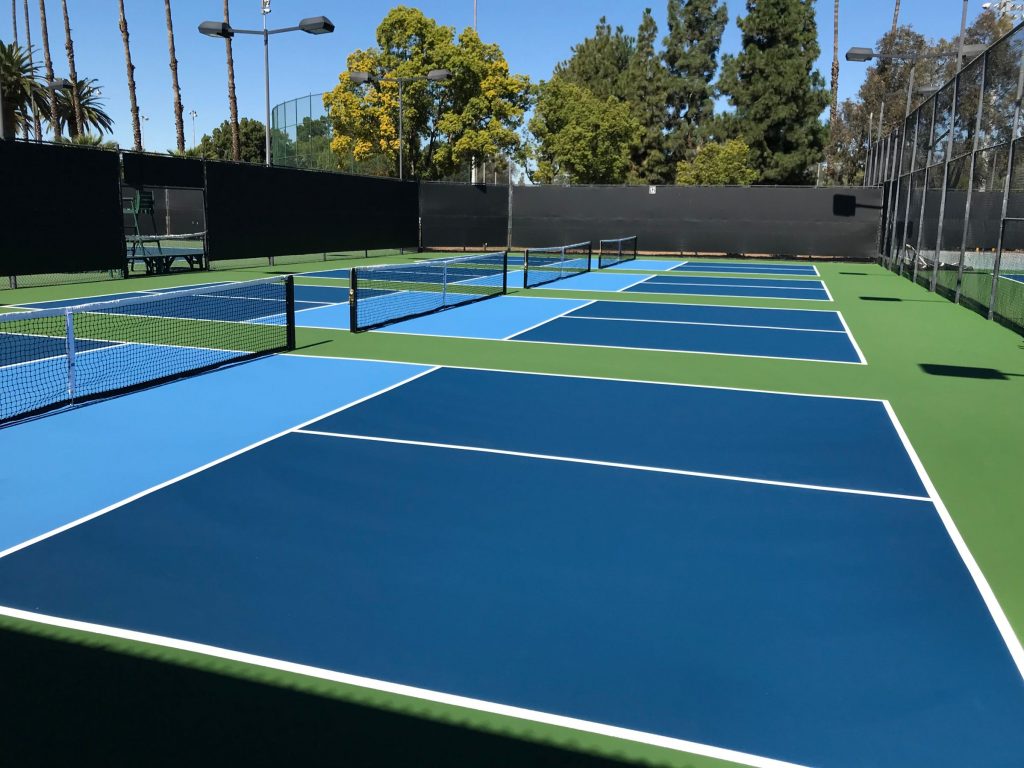Trick Consider the Building And Construction of Pickleball Judiciaries: From Website Option to Final Surfaces
The building and construction of pickleball courts encompasses a series of crucial factors, beginning with the selection of a proper website that stabilizes availability with environmental considerations. Vital components such as court dimensions, surface materials, and drainage systems substantially affect not only the quality of play but also the long life of the center. Furthermore, attention to lighting and ending up touches can boost the general experience for gamers and viewers alike. Comprehending just how each of these components interrelates might expose insights that are usually neglected, prompting a more detailed exam of finest methods in court building and construction.
Site Choice Requirements
When starting the building of pickleball courts, it is crucial to nail down the site choice criteria that will make sure ideal playability and accessibility. The area needs to be quickly obtainable for players, ideally positioned near suburbs or recreation center, to urge involvement.
Additionally, the terrain must be degree and steady, as uneven ground can bring about safety and security risks and influence gameplay. Adequate water drainage is also critical; choosing a website with great water runoff will aid maintain court conditions throughout damaging weather.
An additional crucial consideration is the accessibility of utilities. Access to electrical power and water is required for illumination and upkeep objectives. In addition, distance to car parking centers is essential, assisting in simple accessibility for gamers and spectators alike.
Ecological aspects can not be overlooked; natural color from trees can boost player comfort, while exposure to prevailing winds may interfere with play. Finally, zoning laws and area assistance need to be taken into consideration to guarantee that the project aligns with neighborhood standards and gets the backing it needs for effective application. By very carefully assessing these criteria, stakeholders can create an inviting and functional setting for pickleball fanatics.
Court Capacities and Layout
To guarantee optimum gameplay and adherence to regulations, the measurements and design of pickleball courts need to be thoroughly defined. A common pickleball court measures 20 feet in width and 44 feet in size for both songs and increases play. The recommended format consists of a non-volley area, frequently described as the "cooking area," extending 7 feet from the web on either side. This location is essential, as it influences player positioning and shot option - Illinois and midwest.
The net height is evaluated 36 inches at the sidelines and 34 inches at the center, producing a slight dip that impacts sphere trajectory. Court markings are similarly essential; lines should be 2 inches broad and distinct in color to ensure visibility.
In addition, a barrier zone bordering the court is suggested, usually extending 5 to 10 feet beyond the sidelines and standards to fit players' movements and enhance safety. Proper format and measurements not just ensure compliance with main regulations however additionally improve the total playing experience, accommodating both recreational and competitive play. Mindful preparation in these areas is extremely important to the effective building and construction of pickleball courts.
Surface Area Material Options
Choosing the appropriate surface product for pickleball courts is essential for guaranteeing ideal gamer performance and safety. The option of surface area can dramatically affect gameplay, including sphere bounce, grip, and player convenience.
There are a number of options offered, each with its unique characteristics. Asphalt is a prominent click selection as a result of its longevity and reduced upkeep requirements. It provides a strong playing surface that can endure different weather yet may need regular resurfacing.
Concrete is an additional widely utilized product, using outstanding longevity and a smooth coating. It enables consistent ball bounce yet can be hard on gamers' joints, making it less preferable for long-lasting play without appropriate cushioning.
For those seeking you can try this out enhanced comfort and shock absorption, cushioned acrylic surfaces present a practical option. These surfaces combine a base layer with an acrylic overcoat, providing improved grip and a softer feeling, which is helpful for reducing the danger of injuries.
Lastly, synthetic grass is getting traction, particularly for multi-purpose facilities. Its flexibility and lower upkeep needs make it an attractive option, though it might not provide the very same sphere action as traditional difficult courts. Mindful consideration of these alternatives will make sure an optimum having fun environment.
Drainage and Lighting Factors To Consider
Appropriate drain and efficient lights are important components in the construction of pickleball courts, substantially affecting both playability and safety. Adequate drainage systems protect against water accumulation, which can cause unsafe surface areas and damages to the court framework. A properly designed drainage strategy includes sloped surface areas and ideal materials to facilitate water move away from the playing location - Illinois and midwest. This not only preserves the integrity of the court however likewise minimizes downtime as a result of bad weather.
Illumination is similarly crucial, especially for courts planned for night usage. The positioning of illumination components need to be purposefully intended to get rid of navigate to this site darkness and supply even circulation of light throughout the court.

Last Coatings and Upkeep
After addressing drain and illumination factors to consider, interest turns to the final finishes and recurring maintenance of pickleball courts. Illinois and midwest. The option of surface product is vital, as it affects both playability and longevity. Typical options consist of acrylic layers and specialized sporting activities surfaces that offer ideal grip and padding. These surfaces must be applied in several layers to guarantee strength versus weather condition aspects and use.

Seasonal maintenance could include resurfacing every couple of years, relying on usage and ecological factors. Effectively keeping webs, court lines, and bordering areas is just as essential to supply a secure and delightful having fun experience. By buying high quality finishes and adhering to an organized maintenance routine, center owners can ensure their pickleball courts continue to be in exceptional condition for many years ahead.
Conclusion
In conclusion, the successful building and construction of pickleball courts hinges on thorough interest to numerous vital aspects. High quality surfaces and a durable maintenance routine are necessary for preserving the court's condition, boosting the overall experience for players and viewers alike.